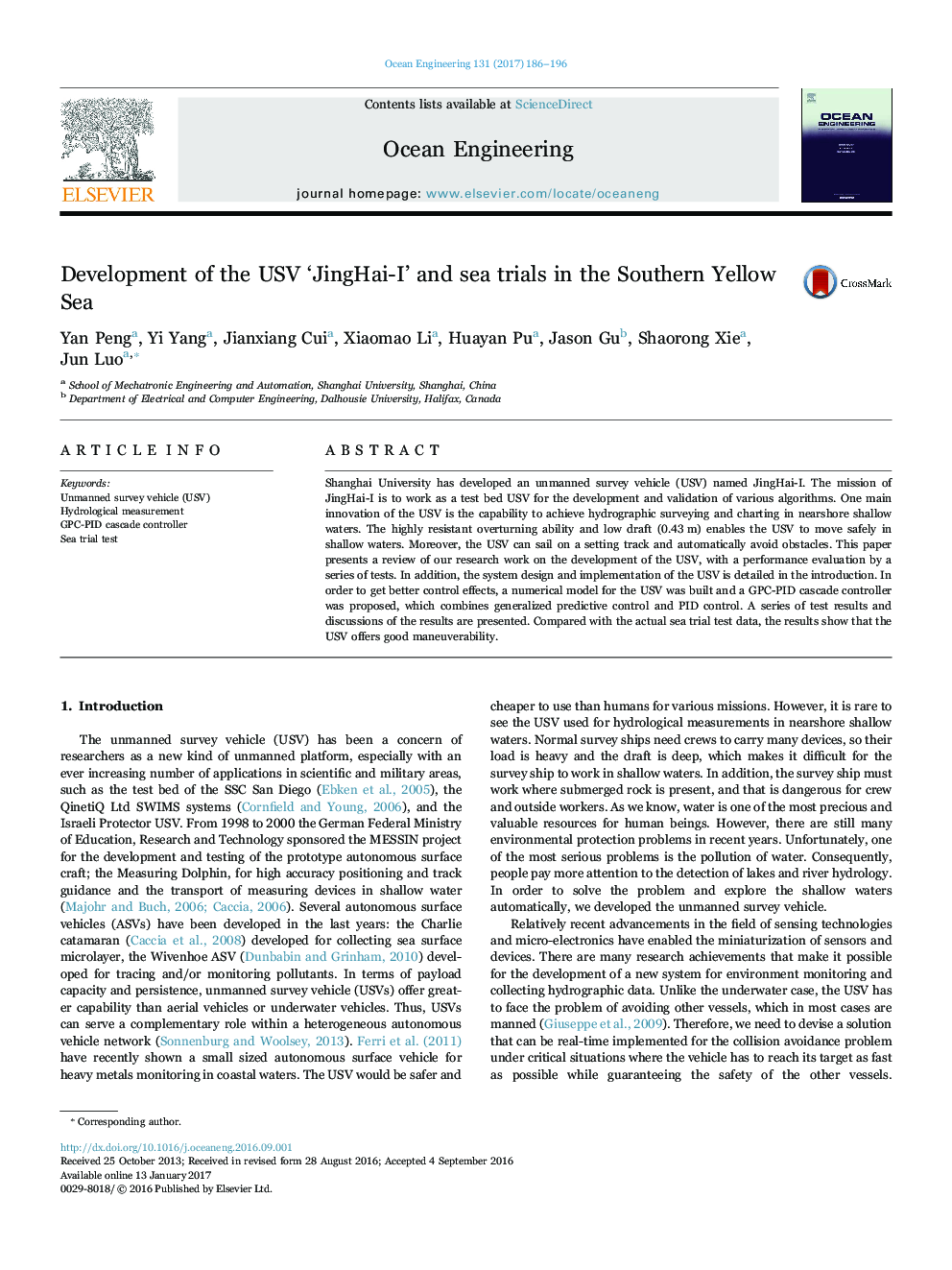| کد مقاله | کد نشریه | سال انتشار | مقاله انگلیسی | نسخه تمام متن |
|---|---|---|---|---|
| 5474537 | 1520659 | 2017 | 11 صفحه PDF | دانلود رایگان |

- We have developed an unmanned survey vehicle enable safety to move in shallow waters.
- Two kind of control modes, autonomous navigation and remote manual control.
- A numerical model for the USV was built and a GPC-PID cascade controller is proposed.
- Transmit hydrological data and vehicle's running status to mother ship in real time.
- Health inspection management and a fault diagnosis system was designed.
Shanghai University has developed an unmanned survey vehicle (USV) named JingHai-I. The mission of JingHai-I is to work as a test bed USV for the development and validation of various algorithms. One main innovation of the USV is the capability to achieve hydrographic surveying and charting in nearshore shallow waters. The highly resistant overturning ability and low draft (0.43Â m) enables the USV to move safely in shallow waters. Moreover, the USV can sail on a setting track and automatically avoid obstacles. This paper presents a review of our research work on the development of the USV, with a performance evaluation by a series of tests. In addition, the system design and implementation of the USV is detailed in the introduction. In order to get better control effects, a numerical model for the USV was built and a GPC-PID cascade controller was proposed, which combines generalized predictive control and PID control. A series of test results and discussions of the results are presented. Compared with the actual sea trial test data, the results show that the USV offers good maneuverability.
Journal: Ocean Engineering - Volume 131, 1 February 2017, Pages 186-196